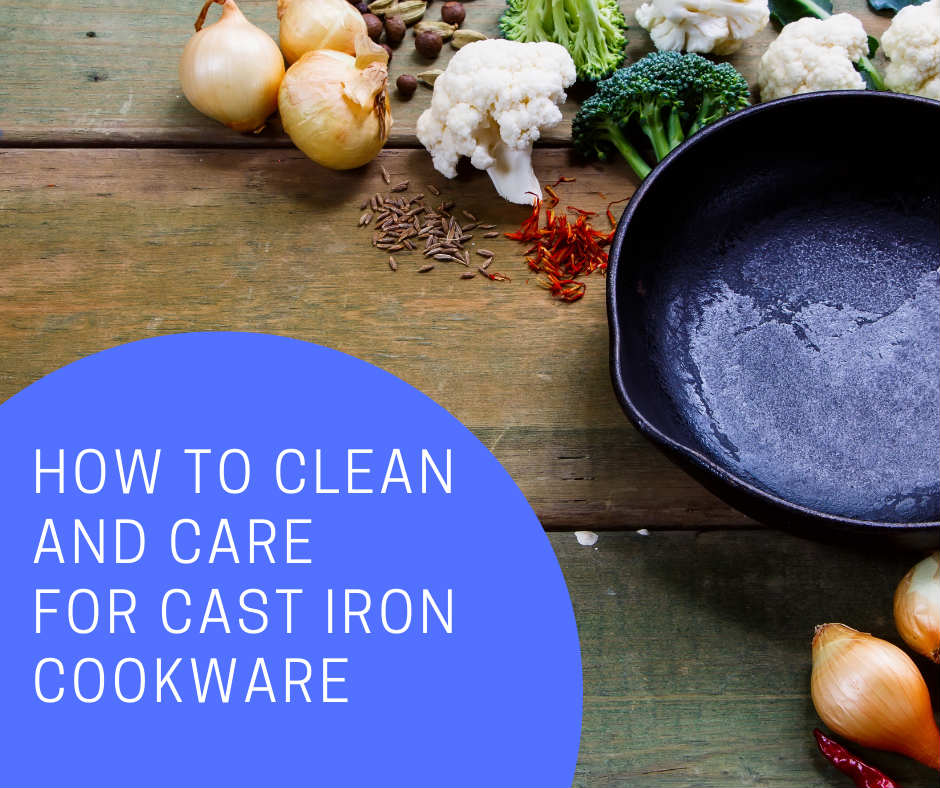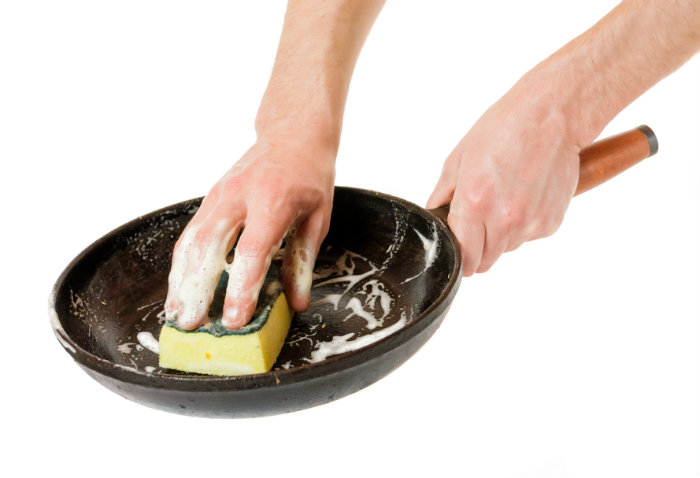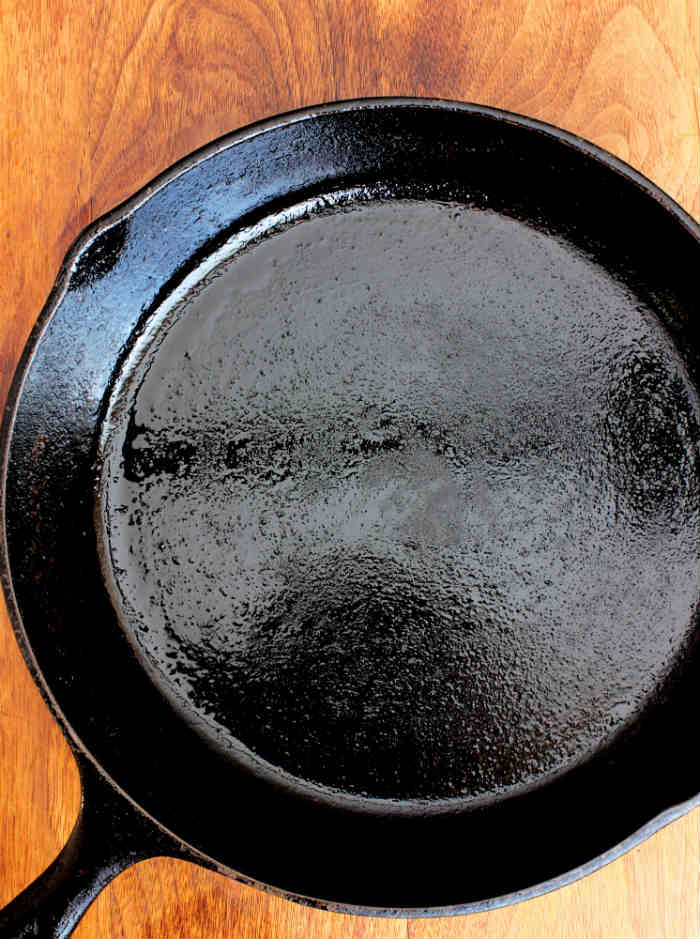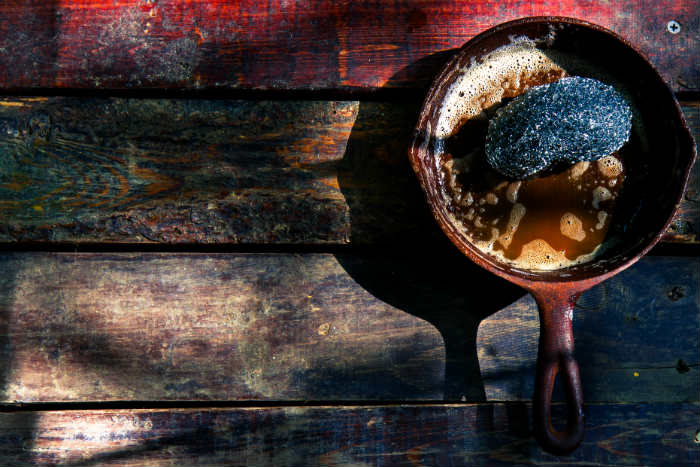How to Clean and Care for Cast Iron Cookware
Cast iron cookware may be more expensive upfront, but they last for generations. Parents can pass their cast iron cookware down to their children if they learn how to clean and care for cast iron cookware properly. It makes you think of the good old days or cooking over a fire while camping with the family. It’s meant to last for years.
Taking care of cast iron doesn’t follow the same recommendations that you find for standard cookware. If you wash it with those methods, you’ll damage the metal. Don’t worry; cleaning and caring for cast iron is more straightforward than you might imagine.
Cast Iron Must Be Seasoned
Nowadays, we purchase non-stick pots and pans regularly. Who wants to have their chicken stuck to the bottom of their pan? Cast iron needs to be seasoned for it to have non-stick capabilities. If you have an unseasoned cast iron pan, it’s a recipe for disaster waiting to happen.
Unseasoned cast iron leaves your food tasting like iron, and the food will stick to the pots all the time. Cleaning off the pan is a serious job for those who aren’t the faint of heart.
If you’re starting with new cast iron pans, you can purchase ones that are already pre-seasoned. Lodge is a well-known manufacturer that sells pre-seasoned cast iron pans for just a few extra dollars.
If a relative gives you a rusty, unseasoned pan, you can restore and reseason that cast iron pan back to its original beauty. Follow these steps.
- Preheat your oven to 325 degrees F.
- Wash the pan with mild dish soap and a stiff brush. The goal is to remove any old food particles stuck to the pan, as well as to dislodge loose rust that accumulated over time. This is the one time it’s okay to use soap on your cast iron pans!
- Rinse and dry the pans completely.
- Now, get a clean rag and apply vegetable oil to the inside and outside of the pan. Some people use lard or melted shortening instead.
- Put the cast iron pan inside of your oven, upside down, on the oven’s center rack.
- Put aluminum foil down on the next rack to catch any drips. No one likes cleaning out their oven.
- Bake for an hour and then turn off the oven. Let the pan cool down completely before removing it from the oven
- Store uncovered in a dry place.
Learn How to Clean a Cast Iron Pan Right
Once the skillet is seasoned and ready to go, you have to know how to clean it properly after you use it. You don’t want to ruin all the work you spent seasoning it!
- Wipe the inside of the still-warm skillet with paper towels after each time you cook to remove any food and oil.
- Run the skillet under hot water, and use a nonmetal brush or non-abrasive scrub pad to remove particles of food.
- After each cleaning, dry the skillet thoroughly. Don’t let your pans drip-dry!
- Put the pan back on the burner over medium-low heat until all traces of moisture are gone. Then, add a ½ teaspoon of oil to the pan and use a paper towel to coat the interior with the oil.
- Let the pan cool completely.
How to Remove Rust from a Cast Iron Skillet
Sometimes, when you stop using a cast iron skillet, rust can develop on the interior and exterior. Removing rust isn’t a huge deal, and it just means you need to maintain it better and, perhaps, reseason it again.
Here are the steps to remove rust from a cast iron skillet.
- Use fine steel wool to remove the rust from the areas on the skillet. Scrub until the area is back to the raw cast iron.
- Now, wash the skillet with warm water and mild dish soap. Scrub with a bristle brush or a mesh sponge.
- Dry off the skillet with a clean towel or paper towels.
- Next, cover the pan with a coating of oil, such as vegetable oil or whatever cooking oil of your choice. Make sure you include the bottom and handle as well. Don’t use too much!
- Follow the same instructions for seasoning by placing in the oven and letting the skillet bake.
4 Tips for Cast Iron Maintenance
A few more tips to remember when using cast iron cookware regularly are:
Cook With Some Oil
The next time you go to cook, use a bit of oil or cooking spray. All you need is a thin layer of oil after each use to keep the food from sticking. If the pan is new, cook with a bit of oil as well. Once your pot has a dark, satiny look, it’s ready to cook without any oil.
Preheat the Pan
One of the benefits of cooking with cast iron is that it heats evenly. To take advantage of this, make sure to preheat the pan first. Let your cast iron pan heat up gradually as the burner heats up. You don’t want to put a cold pan on a hot stove because it can break under thermal shock.
Also, cast iron gets extremely hot. Use mitts for protection!
Cook Some Fatty Foods
One fast way to season up a cast iron skillet is to cook foods with a lot of fat in them, such as bacon. Doing so quickens the long term seasoning process.
Don’t Store Food in your Cast Iron Pans
Sometimes, you might store your dinner leftovers in the pot you cooked it in. Who wants to wash extra dishes? In typical cookware, that would be fine, but cast iron pans break down when exposed to the acid in foods. It can cause the seasoning you worked hard to develop to break down, imparting a metallic taste.
Taking care of cast iron cookware requires a few extra steps, but it’s worth the work. Cast iron skillets and pots last for decades, making them an investment worth your money. Take proper care of them so that they last for years to come.
 Home and Gardening Ideas At home and Gardening ideas we believe inspiring readers about homesteading, self sufficiency
Home and Gardening Ideas At home and Gardening ideas we believe inspiring readers about homesteading, self sufficiency









